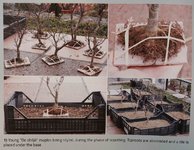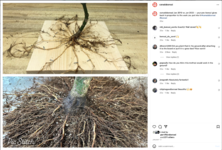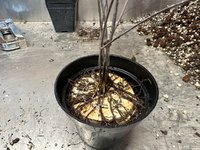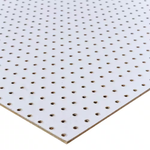The Warm Canuck
Shohin
I just received my copy of Anrea Meriggioli's opus "Bonsai Maples". I highly recommend this to anybody interested in the subject, it's a truly a comprehensive guide on everything Japanese Maple. I also received Peter Adams's "Bonsai with Japanese Maples" which is good but nothing in compared to Meriggioli's book.
Now on to the subject at hand.
Both the authors appear to use boxes that are significantly bigger than the trees root balls. Adam's isn't that much bigger, but my eyes almost popped out of my head when I saw Meriggioli's.
I'm in the habit of putting my trees into a box a few inches larger than the grow box or bag, and let the tree consume it, then "up pot" and continue the process. I'm wondering if this is actually necessary, or just one of those practices we adhere to because we've been told that this is the way to do it. Obviously, these authors are producing Maples that exquisite.
What's your experiences with oversized shallow grow boxes for maples?


Now on to the subject at hand.
Both the authors appear to use boxes that are significantly bigger than the trees root balls. Adam's isn't that much bigger, but my eyes almost popped out of my head when I saw Meriggioli's.
I'm in the habit of putting my trees into a box a few inches larger than the grow box or bag, and let the tree consume it, then "up pot" and continue the process. I'm wondering if this is actually necessary, or just one of those practices we adhere to because we've been told that this is the way to do it. Obviously, these authors are producing Maples that exquisite.
What's your experiences with oversized shallow grow boxes for maples?





